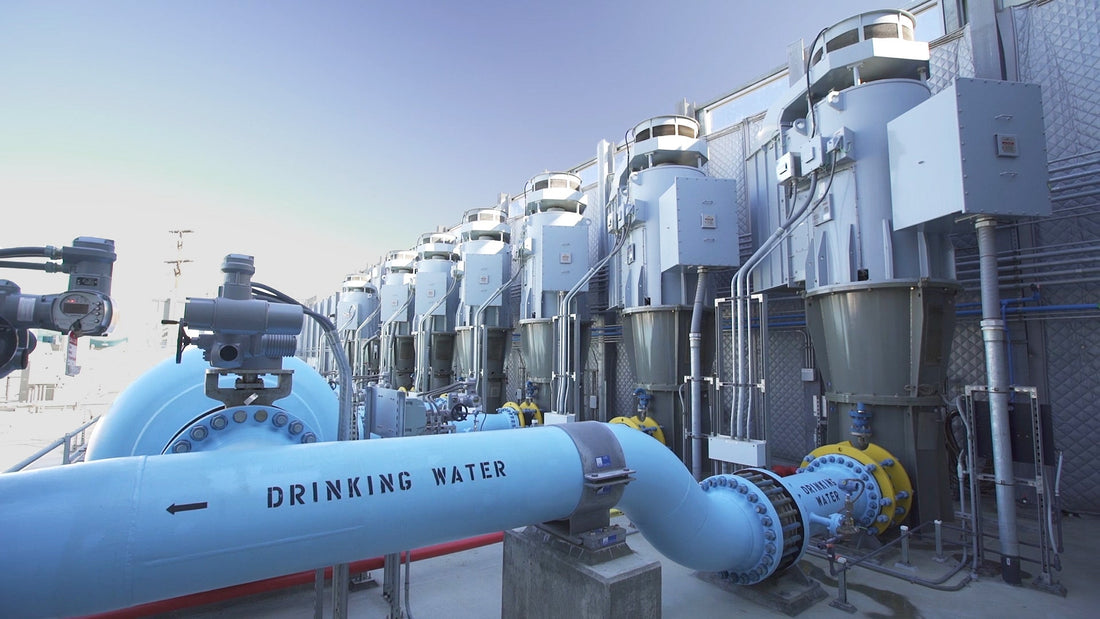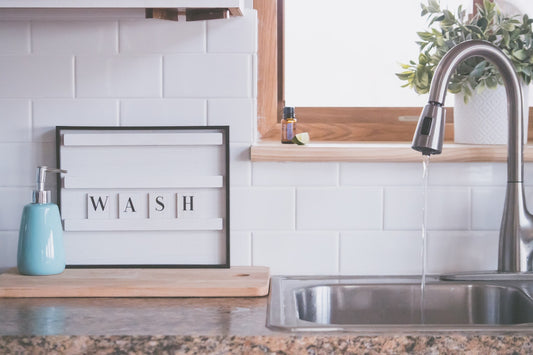Where Does Los Angeles Water Come From?
Los Angeles has a population of about four million people, making it the second-most populous city in the United States behind New York. It's also in the middle of a desert. Identifying the most efficient means of delivering water to Los Angeles and the rest of Southern California has long been one of the state's biggest problems. It is also considered to be one of California's greatest achievements.
The water supply and distribution system of Los Angeles is a bit different from the rest of the country. California is going to have to be inventive if it wants to provide us with water. For example, did you know that a significant amount of the water used in Los Angeles comes from melted snow? Here's a short overview of a few of the methods through which Los Angeles and Southern California get the water that we use every day. You'll never look at your tap in the same way again after reading this article!
California State Water Project
California's State Water Project (SWP) is the world's largest water system, and it is the first, and only one built and managed entirely by a state government in the United States. In all, the system comprises 34 water storage facilities (reservoirs and lakes), 20 pumping units, 4 pumping-generating units, 5 hydroelectric power plants, and 700 miles of open canal and pipeline infrastructure. It provides water to approximately 750,000 acres of farmland in California and 25 million Californians. SWP water is responsible for the production of roughly 45 percent of the fruits and vegetables produced in the United States! In all, the SWP is responsible for 30 percent of the water supply in Southern California. According to the SWP, the system supplied 3.7 million acre-feet of water in 2006.
The SWP transports water across more than 400 miles through the Governor Edmund G. Brown California Aqueduct. In the Sierra Nevada mountains, it begins at Lake Oroville and moves southward via the Sacramento-San Joaquin Delta before reaching Los Angeles and the remainder of Southern California. Snow from the mountain peaks and water from the rivers and streams of Northern and Central California accumulate in the lowlands. Aqueduct water is pumped into the system after it has been drained into reservoirs. The CWP then distributes water to 29 separate contracted water companies from that point forward. These companies are in charge of coordinating water delivery throughout Southern California.
Colorado River Aqueduct (CRA)
Water from the California State Water Project isn't the only aqueduct system that Los Angeles relies on. For more than seven decades, the Colorado River Aqueduct (CRA) has been supplying water to Southern California through the Colorado River. When the Colorado River travels south, it draws water from Utah, New Mexico, Arizona, and Nevada. The Colorado River ultimately drains into Lake Havasu in Arizona, carrying with it all of the water it has transported. Starting at the lake is where the CRA gets its start.
Beginning in Havasu, the aqueduct travels west over the desert until it reaches the eastern slope of the Santa Ana mountains. When the water reaches Southern California, it is distributed to a number of water management companies, who are in charge of ensuring that it reaches consumers like you and me.
The Metropolitan Water District of Southern California constructed and maintains the Central Reclamation Area (CRA). Amid the Great Depression, it was the biggest public works project performed in Southern California history. Following World War II, the Metropolitan Water District increased the size of the CRA. It now transports 1 billion gallons of water each day, thanks to two reservoirs and five pumping stations, together with 63 miles of open canals, 92 miles of tunnel, 55 miles of concrete pipe, and 28 miles of pressurised syphons, to the surrounding area. These facilities contribute to the CRA's ability to supply more than 1.2 million acre-feet of water each year.
Groundwater
Groundwater is any water that accumulates under the surface of the earth's soil and is used for irrigation. Various types of water seep through soil pores and cracks in stony surfaces, including natural condensation, river runoff, and many other types of water. A significant amount of this water ultimately recharges and comes to the surface in springs, marshes, and valleys, replenishing the system.
In addition, wells are used in California to collect groundwater from deep down. Both domestic and private-use wells, as well as large-scale industrial extraction wells, operate on the same groundwater extraction concept and get their water from the same source.
Alluvial groundwater basins and sub-basins are found in 515 different locations across California. When taken as a whole, these basins account for 40 percent of the state's surface area! Groundwater pumped from basin sources under the state's surface provides for more than 35% of Southern California's total drinking water production. Droughts in California, such as the one that we are still recovering from, make groundwater an especially vital resource. During droughts, groundwater resources may account for as much as 46 percent of the state's total supply.
Local governments are responsible for the management of specific groundwater sources. The California Department of Water Resources maintains groundwater regulations and limitations. According to official estimates, there are between one to two million wells in California.
These three sources account for the vast bulk of California's water, but they are not the only ones! California draws water from a diverse range of sources. We recycle wastewater, exchange water with other countries, and even desalinate salt water to make it safe to drink!
As you can see, the water we drink comes from a variety of sources, the overwhelming majority of which is snow melt high in the mountains. And, if we have less slow-melting snow and rain in the future, as a result of warmer, shorter rainy seasons, we may see even more drought in the future. In any case, it's something to think about as you settle down and take a long, deliberate drink of cold water.






